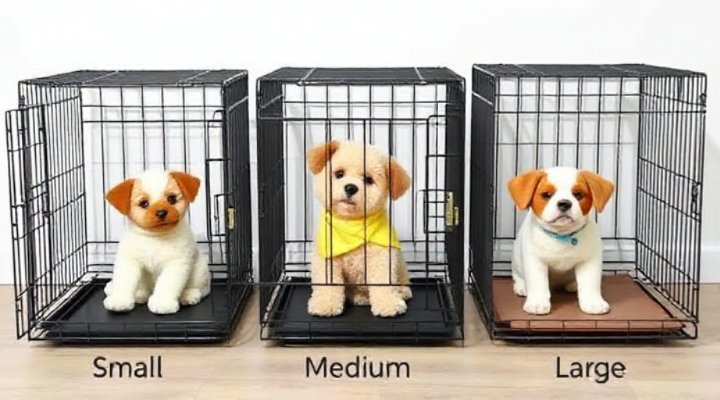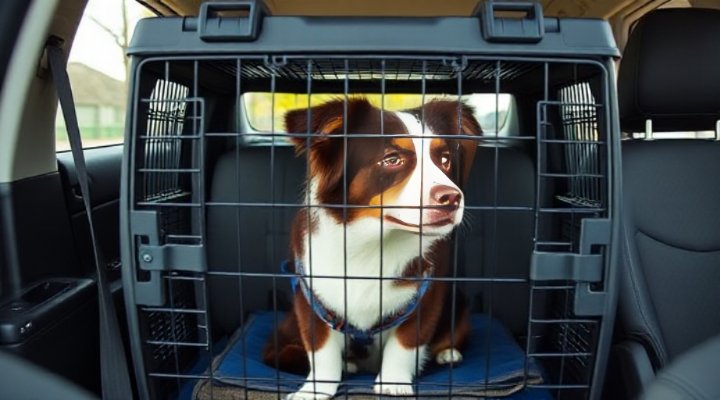Dog crate training is more than just putting your furry friend in a box—it’s about creating a safe haven that satisfies their natural denning instincts. When done correctly, crate training can significantly reduce anxiety, prevent destructive behaviors, and make travel much easier. Above all, it provides your dog with a personal space they can call their own.

Why Dog Crate Training Works: The Science Behind It
Dogs are den animals by nature, which means they instinctively seek out small, enclosed spaces for security. This is why you’ll often find your pup curled up under tables or behind furniture. A properly introduced crate taps into this natural behavior, providing numerous benefits:
- Creates a safe retreat during stressful situations
- Helps with house training by utilizing dogs’ natural cleanliness
- Prevents destructive behaviors when unsupervised
- Makes veterinary visits and travel less stressful
According to the American Veterinary Medical Association, crate training when done properly doesn’t cause distress and can actually help dogs feel more secure. That being said, it’s crucial to follow scientific methods to ensure positive associations.

Step-by-Step Guide to Successful Crate Training
Whether you’re starting with a puppy or an adult dog, the key to successful crate training lies in patience and positive reinforcement. Here’s our proven step-by-step method:
1. Choosing the Right Crate
The crate should be large enough for your dog to stand up, turn around, and lie down comfortably—but not so large that they can eliminate in one corner and sleep in another. For growing puppies, consider a divider panel or our guide on choosing the best crate for puppy training.

2. Creating Positive Associations
Begin by placing treats and favorite toys near the crate, then gradually inside it. Feed meals near the crate, then eventually inside with the door open. This process might take several days, but it’s worth the investment to create positive feelings about the crate.
3. Gradual Introduction
Once your dog is comfortable entering the crate for treats, start closing the door for very short periods while you’re present. Gradually increase the duration, always making sure to release your dog before they show signs of distress.
For more detailed training techniques, check out our article on science-backed dog training methods that complement crate training.

Common Crate Training Questions Answered
How long can my dog stay in the crate?
As a general rule, puppies can hold their bladder for one hour per month of age (up to about 8 hours at 8 months). Adult dogs shouldn’t be crated for more than 8 hours during the day. Remember, crates are tools for training, not long-term confinement solutions.
My dog whines in the crate—what should I do?
First, ensure all physical needs are met. If the whining persists, wait for a moment of quiet before releasing your dog to avoid reinforcing the behavior. For severe cases, our guide on stopping unwanted barking offers additional techniques.
Is crate training cruel?
When done properly—with positive reinforcement and appropriate durations—crate training is not cruel. In fact, most dogs come to view their crate as a safe space. The American Kennel Club considers crate training an important part of responsible dog ownership.

Advanced Crate Training Tips
Once your dog is comfortable with basic crate training, you can use it for various situations:
- Travel: A crate-trained dog will be more comfortable during car rides or flights
- Recovery: Provides a safe space during post-surgical recovery
- Multi-dog households: Gives each dog their own personal space
For dogs that will be traveling frequently, consider combining crate training with our travel crate training guide for best results.
Final Thoughts
Dog crate training, when approached with patience and positive reinforcement, can significantly improve your dog’s quality of life—and yours too! Remember that every dog is different; some may take to crating immediately while others need more time. The key is consistency and making the experience positive.
For more comprehensive training advice, explore our complete dog training guide from basic to advanced methods.
Related Keywords: crate training puppies, how long to crate train a dog, best dog crates for training, crate training benefits, dog crate training schedule

